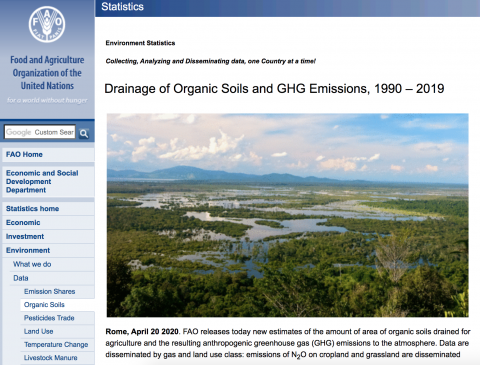Drainage of Organic Soils and GHG Emissions, 1990 – 2019

Document Summary:
FAO released new estimates of the amount of area of organic soils drained for agriculture and the resulting anthropogenic greenhouse gas (GHG) emissions to the atmosphere. Data are disseminated by gas and land use class: emissions of N2O on cropland and grassland are disseminated under the domain Cultivation of Organic soils of FAOSTAT Emissions-agriculture; whereas emissions of CO2 on Cropland and Grassland are disseminated within the FAOSTAT Emissions-Land use domain. Organic soils are, generally speaking, wet soils ecosystems, characterized by very high levels of organic matter, which accumulates under the anoxic conditions that exist in the presence of water. They include tropical and boreal peatlands, high-latitude bogs, ferns and mires. Indeed, while organic soils cover globally a mere 3 percent of the terrestrial land area, they represent up to 30 percent of the total soil carbon, playing an important role in maintaining the earth’s carbon balance. Drainage of organic soils releases large quantities of carbon dioxide (CO2) and nitrous dioxide (N2O) into the atmosphere and for several decades after the drainage event, due to the increased oxydation rates of the underlying organic matter. Data are aggregated at national level for 101 countries and 4 territories, representing the subset of FAOSTAT countries and territories where organic soils are present. Statistics are disseminated in three separate domains, over the period 1990 – 2019, in line with country reporting requirements to the Climate Convention, following the Intergovernmental Panel on Climate Change Guidelines (IPCC, 2006).
Link to an External Document:
